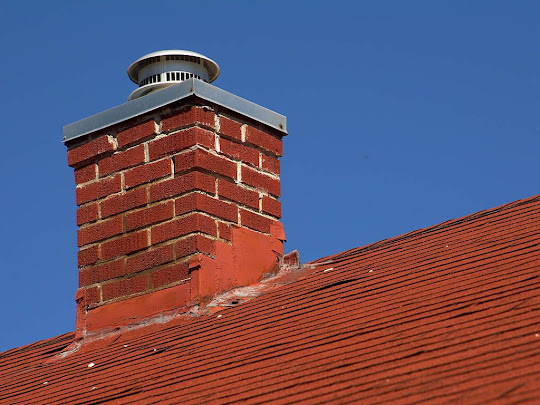Why Your Chimney Cap is Rusting?
The primary cause for chimney cap replacement is rust. The strength of the entire cap has been compromised if they are severely rusty. Harm will inevitably occur, hence the cap needs to be changed.
You might be questioning how to get rid of the Rust on Chimney Cap. It makes sense since rust can harm your chimney. Therefore, getting rid of it right away will stop the problem from getting any worse. Rust can be eliminated from a chimney by a few different methods. However, to prevent any damage, it’s best to leave it to the experts at A Step in Time Chimney Sweeps.
Is it common for chimney caps to have rust?
In short, the answer to the question “Is it typical for a chimney to rust?” is YES.
Although the weather and the growth of rust are beyond your control due to the accessibility of your chimney to these components, you can prevent more damage from happening to your chimney.
Reddish stains on the chimney frequently get caused by a rusty cap. Chimney covers and chimney tops may fall and harm your home over time. A chimney cover is essential for your house to keep out rain, snow, sleet, and other elements. Safeguard against damage and keep moisture out by using this vital chimney equipment.
What are the reasons that your chimney cap is rusting?
The likelihood is that a combination of older caps, poor maintenance, and extended exposure to moisture is causing the rusting of your chimney cap. Let’s explore them as under:
- Metal component quality
The level of rust in your chimney is primarily based on the quality of the metal parts that compose it. Low-quality metals are prone to rust and corrosion over time, especially in severe weather. Even though these cost more, higher-quality stainless-steel components had greater corrosion resistance. Purchasing better chimney materials will assist in making your chimney last longer and need less maintenance. Making sure that the metals used to build your chimney are durable and not prone to rust will prevent early deterioration and improve the overall efficiency and safety of your fireplace system.
- Rain and humidity exposure
Because they are out all the time, chimneys are particularly vulnerable to moisture and rain. Water is the primary cause of rust, and over time, it may allow serious corrosion to penetrate the metal parts of your chimney. The issue gets worse with humid environments as they retain additional moisture in the air, which speeds up the process of rusting. These effects can be lessened by installing a suitable chimney cap as well as making sure there is sufficient waterproofing. This will protect the metal parts from direct exposure to moisture and rain, which reduces the chance of rust.
- Absence of maintenance
Rust control requires regular upkeep, which includes annual chimney cleanings and inspections. If your chimney is not regularly maintained, minor issues like little rust stains can grow into larger issues very fast, threatening the underlying structure of your chimney. Early identification of rust and other deterioration is made feasible via inspections, allowing for immediate repairs. Cleaning eliminates the presence of harmful substances like creosote and soot, which may retain moisture and promote corrosion. Maintaining your chimney on an ongoing basis preserves it in good shape, extends its longevity, and ensures that your fireplace works safely.
- Severe Weather
Conditions that are too harsh for you, like coastal regions with salt air and constant humid weather, will speed up the rusting of your chimney top. These lower-quality metals are susceptible to corrosion when water collects on the chimney cap’s surface due to rain, snow, or even high levels of humidity. It is suggested that you change your old cap with a new stainless steel one if you are experiencing this issue.
How to Prevent Your Chimney Cap from Rusting?
Stainless steel chimney components are the best way to keep your chimney from rusting. Your system is unlikely to corrode over time if stainless steel caps, flashing, liners, and chase covers are used.
Our preferred type of steel is stainless because it includes chromium, which prevents rust from developing. When it comes to durability against oxygen and moisture, chromium exceeds components like zinc. A poor long-term rust protection method, zinc coating is frequently observed on older chimney components.
Another excellent method of prevention is to get it done yearly. Regardless of age, all types of units require an annual inspection and cleaning by a certified professional. Especially after the inspection, your professional will say if the parts are safe and propose suitable fixes. Even with stainless steel components, your system will break down faster the longer you skip regular expert maintenance! Imagine the following scenario: a flue that is not cleaned properly. Then creosote will build up, causing discolouration and, most importantly, accelerating the deteriorating process.
Hire Professional Chimney Experts
Arranging routine chimney maintenance and inspections with a professional technician is also crucial. Experts can spot minor chimney caps rusting early on, enabling you to get rid of it before the problem develops. They may additionally identify if there is more severe water damage. If you ignore taking care of your chimney, rust may get out of control and be extremely difficult to remove.
A Step in Time Chimney Sweeps will help you if you’ve noticed rust on your chimney or if it’s time for your annual chimney maintenance visit. Give us a call for chimney maintenance, cleanings, inspections, and other services.
.jpg)
.jpg)

.jpg)
Comments
Post a Comment